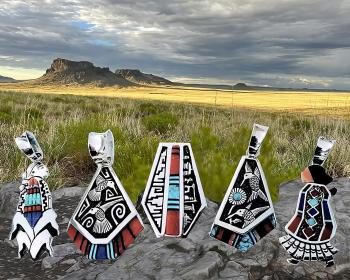Reference Publications has a program of producing systematic and generally accessible reference works on ethnic groups. "Too often, in ethnic studies as in other subject areas, over-specialization and specialists' jargon have presented a barrier to the general diffusion of useful knowledge." With A Concise Dictionary of Indian Tribes of North America, the publishers aim to present historical, geographical, and ethnographical information in short, article-length formats, making a comprehensive list of all native North American societies readily accessible to the nonexpert. Barbara A. Leitch, who was hired to write the articles, did a stint as a Peace Corps volunteer in the Philippines, was Southeast Asia research editor for The New Encyclopedia Britannica (1974), and authored Chronology of the American Indian (1975).
Collecting and interpreting the history and ethnography of hundreds of Indian nations in short and accurate descriptions is no mean feat. The dictionary contains information about nearly all Indian nations in the present-day United States and Canada. Most articles contain descriptions of pre-Columbian location, current location, linguistic and ethnic relations to other nations, social organization, political organization, material culture and economy, and a historical overview of contacts with Westerners and of postcontact changes. Each article contains a short bibliography (usually one or two references) that directs the interested reader to other sources. The book contains numerous maps showing the distribution of languages, culture groups, ecological zones, and the present locations and reservations of the Indian tribes. The book's large index (more than 8,500 entries) is designed to be informative and to arouse the reader's interest in a variety of topics.
Although this book aims to serve the reference needs of the nonexpert, experts will also find it useful, especially for preliminary research on groups outside their areas of expertise. The articles provide good starting points in history, ethnography, and linguistics. The information on location, linguistic affiliation, and economic, religious, social, and political organization will provide comparativists with ready introductory information that will shorten efforts to find comparable Indian cases within similar historical contexts.
Perhaps most interesting for the readers of Cultural Survival's publications will be the historical information about political and economic responses to Western contact. By reading a large number of articles, especially those in related ecological-regional areas (e.g., plains, northwest culture, plateau, southwest, etc.), the reader can obtain an overview of the history of American Indians during the last several centuries. The reader will also become attuned to the variation in the ways the Indian nations attempted to manage colonial relations, and will learn about the different types of contact, and, perhaps most important of all, the variation in social, cultural, and political order among native North American societies. Readers from different parts of the world will find ready comparisons between the current conditions and struggles of indigenous peoples throughout the world and the history and contemporary conditions of the native North Americans. The emergence and expansion of American and Canadian societies and market systems provide examples and comparative situations that are useful for analyzing the harsh realities of nationalist expansion and incorporation that confront indigenous groups throughout the contemporary world. The historical experiences of native North American nations will help inform the members of other indigenous nations and their allies on how to more effectively understand their current conditions and devise pragmatic strategies for enhancing cultural and political survival.
Nevertheless, A Concise Dictionary fulfills a great service for both readers and scholars by collecting the summary descriptions of virtually all the native societies of North America. The general reader, who does not have time for shuffling around research libraries, will find that the dictionary will save considerable time and effort. This dictionary should be a standard reference book in every library, and those whose professional work brings them into contact with Indian affairs will derive significant advantages from having access to its contents. Both publisher and author are to be commended for presenting a useful and extensive reference work designed to reach a wide audience.
Article copyright Cultural Survival, Inc.



